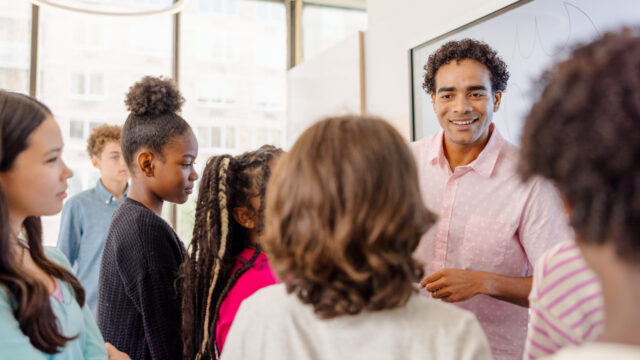
Technology and Individual Learning
Today there is a constellation of circumstances driving the need for learning to adapt to an individual student’s needs. Language skills, prior knowledge and experiences, and learning challenges drive this diversity of learning needs.
Until recently, the conversation had been all about getting technology into the classroom. Now the conversation has moved on from whether we should have technology in the classroom to it being a requirement for every student. These factors created the perfect environment for adaptive learning to flourish, causing everyone to look critically at the classroom resources needed to reach each student individually.
What Is Adaptive Learning?
Adaptive learning in education is a form of learning where the student is first diagnosed, and then the program determines a learning pathway personalized to their individual needs. The elements of adaptive learning are consistent across all programs.
Diagnostics determine where the starting point is for each student. There are different ways to assess what a student knows or doesn’t know:
- Have a student take a test upfront.
- Let an adaptive practice program assess students’ needs by starting them at a common point, and based on how they answer questions, determine over time what they need.
Once the diagnostic has occurred, the system generates a personalized learning pathway for each student. This usually has two components:
- A “learning” component that presents the concept or reinforces what has already been taught by the teacher.
- A “practice” component that is usually made up of a range of interactive item types that tests what a student understands and provides scaffolding for students so they can be provided support independent of the teacher.
The goal is to engage students in productive struggle. By providing students precisely what they need, every student focuses on their unique skill gaps and works in their zone of proximal development. Students receive content that’s not too hard or too easy—but just right. Elements like games, rewards, and other engagement techniques motivate students to keep going.
What Does Adaptive Learning Technology Look Like in the Classroom?
The teacher’s role in this is like a DJ “working the decks,” that is, selecting and monitoring music but leaving most of the playing for the equipment. They are monitoring the data and intervening when students are stuck or spending too much time on one topic. The data provided should alert the teacher to where growth occurs and recommend options for them to intervene as necessary. This takes away significant labor from the teacher, so kids can work independently, while the teacher can focus on small-group instruction or address other needs for groups of students.
An important element in all of this: I hear teachers say, “How can I keep everyone on topic when they are all over the place?!” Even though it’s adaptive and, by definition, has kids in different places, teachers have the control to keep them together in the right domains so chaos doesn’t ensue. Most programs allow the adaptivity to occur within the parameters the teacher has set, giving each teacher the level of control they are comfortable with.

Ways to Use Adaptive Learning in the Classroom
Adaptive learning programs are usually associated with independent practice. After all, they are perfect for students confined to a computer. But they can be used in a host of additional settings too:
- Homework assignments
- After school programs
- Pullout sessions
- Formative assessment to determine instruction
The programs can be used to fill a variety of periods across the school day. Adaptive learning programs also cater to the spectrum of teacher needs. A teacher can take a more automated approach, even down to automating the sequence of what the student sees. The best programs will allow a teacher to auto-assign the content and intervene as they see fit.
Adaptive Learning Examples
Adaptive learning programs all have similar DNA but address different learning needs. Waggle focuses on skill practice and instructional support, targeting skill gaps and adapting to the specific needs of an individual student. Amira focuses on a different kind of adaptive practice where the principles are the exact same, but the focus is squarely on phonics and phonemic awareness. Of course, we are not the only company developing adaptive learning programs. Many practice programs personalize the learning experience through adaptivity.
The Benefits of Adaptive Learning
The benefits of adaptive learning are enormous for teachers and students. It’s a powerful tool that targets an individual student’s needs and provides a personalized learning plan they can execute independently of the teacher. It has a huge benefit for the teacher in that they can prioritize their time using the data generated from these programs and provide more targeted instructional support as needed.
In reality, adaptive learning has now become an integral part of the curriculum. As tools become more sophisticated and diverse needs continue to unfold, adaptive learning will become even more important to ensure every student gets what they need while giving teachers the control and support they need. Then, learning can take place for all students.
***
For more on adaptive learning technology, explore how Waggle personalizes practice in math and ELA to help students in Grades K–8 thrive. Request a self-guided demo.
This blog, originally published in 2022, has been updated for 2024.
Get our free Reading Intervention eBook today.












